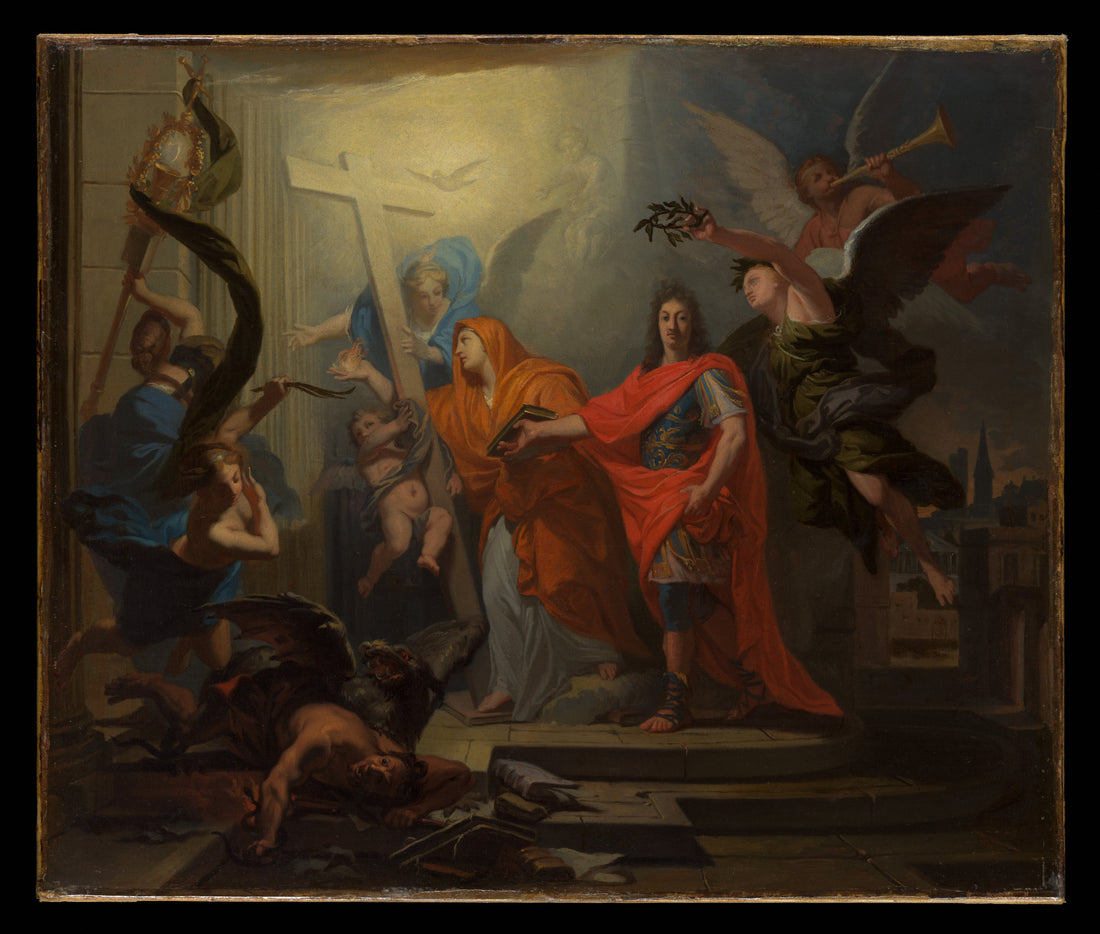
Visual Theology: How Art Preserves Our Faith
Before the average person could read Scripture, they saw it.
They saw the Word made flesh in vibrant stained glass, the agony of Calvary in painted wood, and the hope of the Resurrection brushed in gold on chapel walls. For centuries, art has been more than decoration in the Catholic Church—it has been a sanctuary for truth, a teacher of doctrine, and a vessel of beauty that carries the weight of heaven in earthly form.
Today, in a world overflowing with fleeting imagery, sacred art remains one of the most powerful and enduring ways to encounter the divine. It doesn’t just illustrate the faith—it embodies it.
--
In times when literacy was rare and the printed word inaccessible, the Church turned to its most powerful tool for teaching and remembrance: art. Stained glass, sculpture, frescoes, and panel paintings became sacred texts in color and form—icons not merely of aesthetic value but of deep catechetical significance. This tradition, known as visual theology, continues to reveal layers of our faith’s history, beauty, and doctrine.
Even now, when the written word is ubiquitous, Catholic art continues to invite the soul into contemplation and offers a living connection to our past.
A Theology in Color: The Purpose of Sacred Art
The Second Council of Nicaea (787 AD) affirmed that holy images serve not to replace God but to elevate our minds to Him. Sacred art was created to instruct, evoke reverence, and make present the invisible.
In the words of St. John Damascene:
“What the word transmits through the ear, the painting silently shows through the image.”
The Ghent Altarpiece – Jan van Eyck (1432)

Arguably one of the most theologically rich artworks in Christian history, the Adoration of the Mystic Lamb, better known as the Ghent Altarpiece, is a jewel of late Medieval Catholic theology. Every inch of the polyptych is embedded with Trinitarian symbolism, Marian typology, and Eucharistic foreshadowing.
-
The central panel depicts the Lamb of God bleeding into a chalice on the altar—a direct reference to the Eucharist.
-
The Lamb stands alive, eyes open, echoing Revelation’s imagery of Christ, “standing as if slain.”
-
Surrounding the altar are saints, prophets, martyrs, and Church figures, reinforcing the concept of the Communion of Saints.
Van Eyck, a master of oil painting, invites not only admiration but study. The piece reads like a visual catechism.
Michelangelo’s Last Judgment – Sistine Chapel (1536–1541)
Towering behind the altar of the Sistine Chapel is Michelangelo’s Last Judgment, a masterpiece of both terror and grace. Painted at the end of his life, this fresco reveals the artist’s own theological wrestling with mortality and divine justice.
-
Christ is at the center, a commanding, almost stern figure—not the Infant of Bethlehem or the Crucified, but the Judge of the Living and the Dead.
-
The saved ascend in swirling motion to heaven; the damned fall in chaos, some clawing to escape their fate.
-
St. Bartholomew, shown holding his flayed skin, is said to bear Michelangelo’s own self-portrait—a haunting act of humility and self-examination.
This isn’t just art—it’s an invitation to prepare one’s soul.
The Annunciation – Fra Angelico (c. 1437–1446)

Fra Angelico, a Dominican friar, painted not only with skill but prayer. His Annunciation, painted for the Convent of San Domenico in Cortona, radiates theological subtlety.
-
Mary is depicted in quiet humility, her arms folded in an act of receptivity and fiat.
-
The enclosed garden behind her (the hortus conclusus) references her perpetual virginity.
-
The angel bows—not just in greeting, but in reverence for the mystery unfolding before him.
Fra Angelico believed that painting was an extension of his preaching. He was beatified by Pope John Paul II and called the “Painter of the Angels.”
Symbolism in the Shadows: Hidden Theological Messages
Catholic art is full of quiet symbols that, once noticed, draw us deeper:
-
Lilies symbolize purity and are almost always found in depictions of the Virgin Mary.
-
Keys refer to St. Peter and his role as the first pope.
-
The pelican, often shown pecking at its breast, is a Eucharistic image—legend said the bird would wound itself to feed its young, mirroring Christ’s sacrifice.
These symbols acted as mnemonic devices for the faithful, guiding both devotion and theological understanding in an age without podcasts, catechisms, or social media.
Art as a Living Catechism
To encounter sacred art is to encounter the faith made visible.
Whether it is the sorrow of a Pietà, the triumph of a Resurrection painting, or the quiet power of a saint’s icon, these images do more than decorate—they teach, convict, inspire, and console.
In an age flooded with images, it is more important than ever to ground our eyes—and our hearts—in sacred ones.
Want to dive deeper into Catholic symbolism or feature more art like this?
Sign up for our newsletter or follow us on Instagram @ArmorAflame for more reflections on faith, beauty, and tradition.
